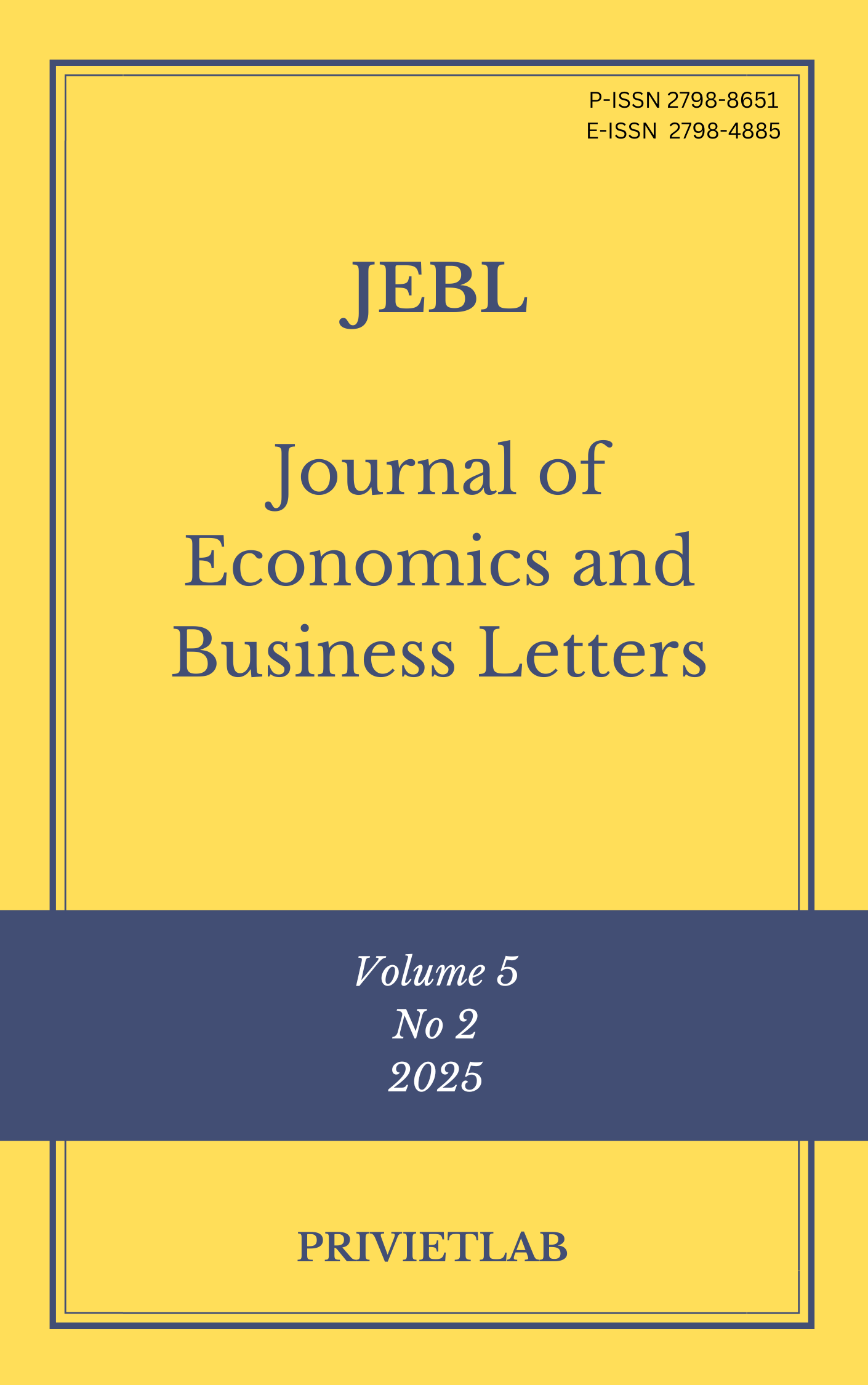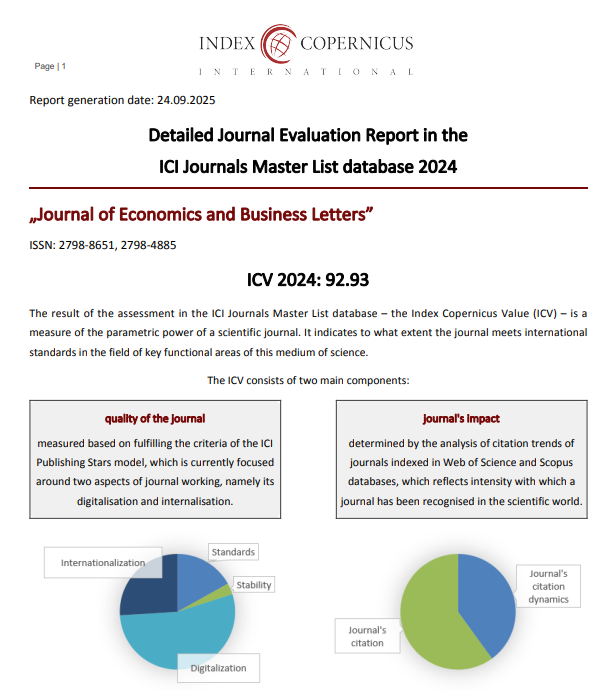A systematic literature review of online religious leaders, digital advertising, management performance, and consumer decisions in Islamic Banking
DOI:
https://doi.org/10.55942/jebl.v5i2.505Keywords:
Islamic banking, online religious leaders, digital advertising, management performance, consumer behavior, Theory of Reasoned Action, Stimulus-Organism-ResponseAbstract
This study systematically reviews the literature to examine how online religious leaders, digital advertising, and management performance influence consumer decisions to adopt Islamic banking products, with a focus on Bank Syariah Indonesia (BSI). Employing a systematic literature review methodology, 118 studies published between 2005 and 2025 were analyzed using thematic synthesis. The findings reveal that these three antecedents impact consumer behavior through the mediating roles of trust and motivation. Online religious leaders build legitimacy and shape subjective norms, while digital advertising engages consumers through credibility and emotional appeal. Management performance reinforces service quality, innovation, and Sharia governance, enhancing trust. The integration of the Theory of Reasoned Action (TRA) and the Stimulus-Organism-Response (SOR) model provides a robust theoretical lens to understand these dynamics. The study contributes to academic discourse by contextualizing behavioral theories in Islamic banking and offers practical guidance for banks to develop culturally sensitive, ethically compliant, and effective marketing and management strategies.
References
Ahmad, M., Zafar, M. B., & Perveen, A. (2024). Consumer shift behavior from conventional to Islamic banking: decision-making analysis through AHP. Journal of Islamic Marketing, 15(5), 1280-1302. https://doi.org /10.1108/JIMA-02-2023-0036.
Althuwaini, S. (2022). The Effect of Social Media Activities on Brand Loyalty for Banks: The Role of Brand Trust. Administrative Sciences, 12(4). https://doi.org/10.3390/admsci12040148
Aslam, S., Elmagrhi, M. H., Rehman, R. U., & Ntim, C. G. (2021). Environmental management practices and financial performance using data envelopment analysis in Japan: The mediating role of environmental performance. Business Strategy and the Environment, 30(4), 1655–1673. https://doi.org/10.1002/bse.2700
Bessis, J. (2015). Risk Management in Banking. New York, United States. Wiley. https://www.wiley.com/remtitle.cgi?ISBN=0470689854
Cardoso, A. (2024). Bank Reputation and Trust: Impact on Client Satisfaction and Loyalty for Portuguese Clients. Journal of Risk and Financial Management, 17(7), 277. https://doi.org/10.3390/jrfm17070277
Davis, F. (1985). A Technology Acceptance Model For Empirically Testing - User Information Systems: Theory And Result. Wayne State University.
Eichengreen, B. (2015). Hall of Mirrors: The Great Depression, the Great Recession, and the Uses — and Misuses — of History. Oxford University Press.
Eid, R. (2015). The role of Islamic religiosity on the relationship between perceived value and tourist satisfaction. Tourism Management, 46, 477–488. https://doi.org/10.1016/j.tourman.2014.08.003
Faiza, K. (2023). Determinants of Consumers’ Decision to Switch to Islamic Banking System: A Case Study of Oman. Contemporary Review of the Middle East, 10(1), 46–61. https://doi.org/10.1177/23477989221143833
Fishbein, M., & Ajzen, I. (1975). Beliefs, attitude, intention, and behavior: An introduction to theory and research.
Gan, C. (2017). The influence of perceived value on purchase intention in social commerce context. Internet Research, 27(4), 772–785. https://doi.org/10.1108/IntR-06-2016-0164
Gong, X., Ren, J., Zeng, L., & Xing, R. (2022). How KOLs Influence Consumer Purchase Intention in Short Video Platforms: Mediating Effects of Emotional Response and Virtual Touch. International Journal of Information Systems in the Service Sector, 14(1), 1–23. https://doi.org/10.4018/IJISSS.287576
K V, S., KP, N., & Kamath, G. B. (2021). Social media advertisements and their influence on consumer purchase intention. Cogent Business & Management, 8(1). https://doi.org/10.1080/23311975.2021.2000697
Kotler. (2021). Marketing Management (16th ed.). London, United Kingdom. Pearson Education, Inc.
Lewis, D. M. K. H. dan D. M. (2021). Islamic Banking and Finance: Theory and Practice. Cheltenham, United Kingdom. Edward Elgar Publishing.
Li, B. (2017). Environmental management system adoption and the operational performance of firm in the textile and apparel industry of China. Sustainability (Switzerland), 9(6). https://doi.org/10.3390/su9060992
Mahmood, H. dan P. A. K. (2019). Islamic Financial Marketing: The Role of Digital Advertising in Consumer Decision-Making. London, United Kingdom. Routledge.
Manzoor. (2020). Impact of Social Media Marketing on Consumer’s Purchase Intentions: The Mediating role of Customer Trust. International Journal of Entrepreneurial Research, 3(2), 41–48. https://doi.org/10.31580/ijer.v3i2.1386
Murthy, Y. S. R., & Al-Muharrami, S. (2020). Credit rating strategies: A study of GCC banks. Sage Open, 10(4), 2158244020982290. https://doi.org /10.1177/2158244020982290
Nemati, A., Firdous, R., & Muhammad Khan, S. (2022). Antecedents of Social Media Platforms on Consumer Behavior: An Evidence from Islamic Banking Sector of Pakistan. Journal of Islamic Business and Management (JIBM), 12(02), 255–272. https://doi.org/10.26501/jibm/2022.1202-008
Nurul et.al. (2017). Islamic Marketing and Branding: Insights from Asia, Middle East, and Europe. Springer.
OJK. (2023). Statistik Perbankan Syariah Indonesia. https://ojk.go.id/id/kanal/syariah/data-dan-statistik/statistik-perbankan-syariah/default.aspx
Phong. (2023). Impact of the Bank’s Image and Reputation on Customer’s Loyalty through Customer’s Trust: A Case of Commercial Banks in Ho Chi Minh City. Open Journal of Business and Management, 11(05), 2652–2685. https://doi.org/10.4236/ojbm.2023.115145
Saunders, A, M. M. C. (2020). Financial Institutions Management. United States. McGraw-Hill Education.
Shafiq, A. (2022). Institutional Islamic Economics and Finance. Taylor & Francis Group. https://api.taylorfrancis.com/content/books/mono/download?identifierName=doi&identifierValue=10.4324/9781003227649&type=googlepdf
Shaouf, A., Lü, K., & Li, X. (2016). The effect of web advertising visual design on online purchase intention: An examination across gender. Computers in Human Behavior, 60, 622–634. https://doi.org/10.1016/j.chb.2016.02.090
Tirole, J. (2017). The Role of Banks in Financial Intermediation: Theory and Practice. Princeton University Press.
Tran, E. al. (2023). The influence of key opinion leaders on consumers’ purchasing intention regarding green fashion products. Frontiers in Communication, 8(2010). https://doi.org/10.3389/fcomm.2023.1296174
Yu, S., & Lee, J. (2019). The Effects of Consumers’ Perceived Values on Intention to Purchase Upcycled Products. Sustainability, 11(4), 1034. https://doi.org/10.3390/su11041034
Downloads
Published
How to Cite
Issue
Section
License
Copyright (c) 2025 Kurniawati Mulyanti, Aris Setyanto Nugroho, Darmansyah Darmansyah

This work is licensed under a Creative Commons Attribution 4.0 International License.
















